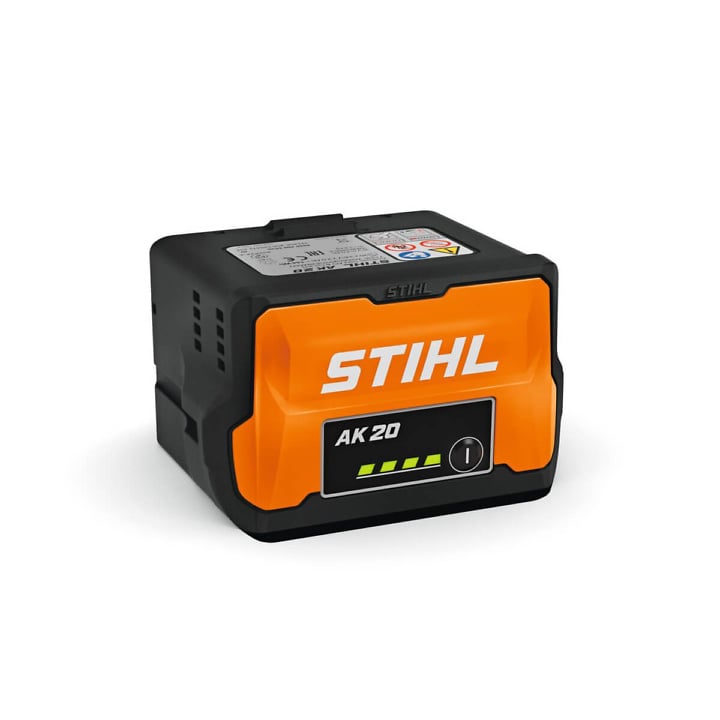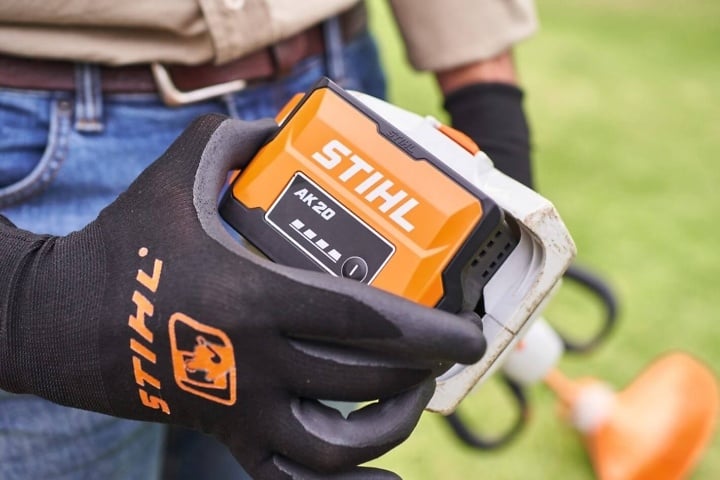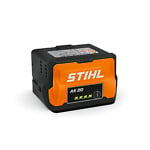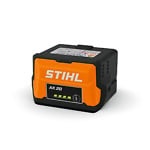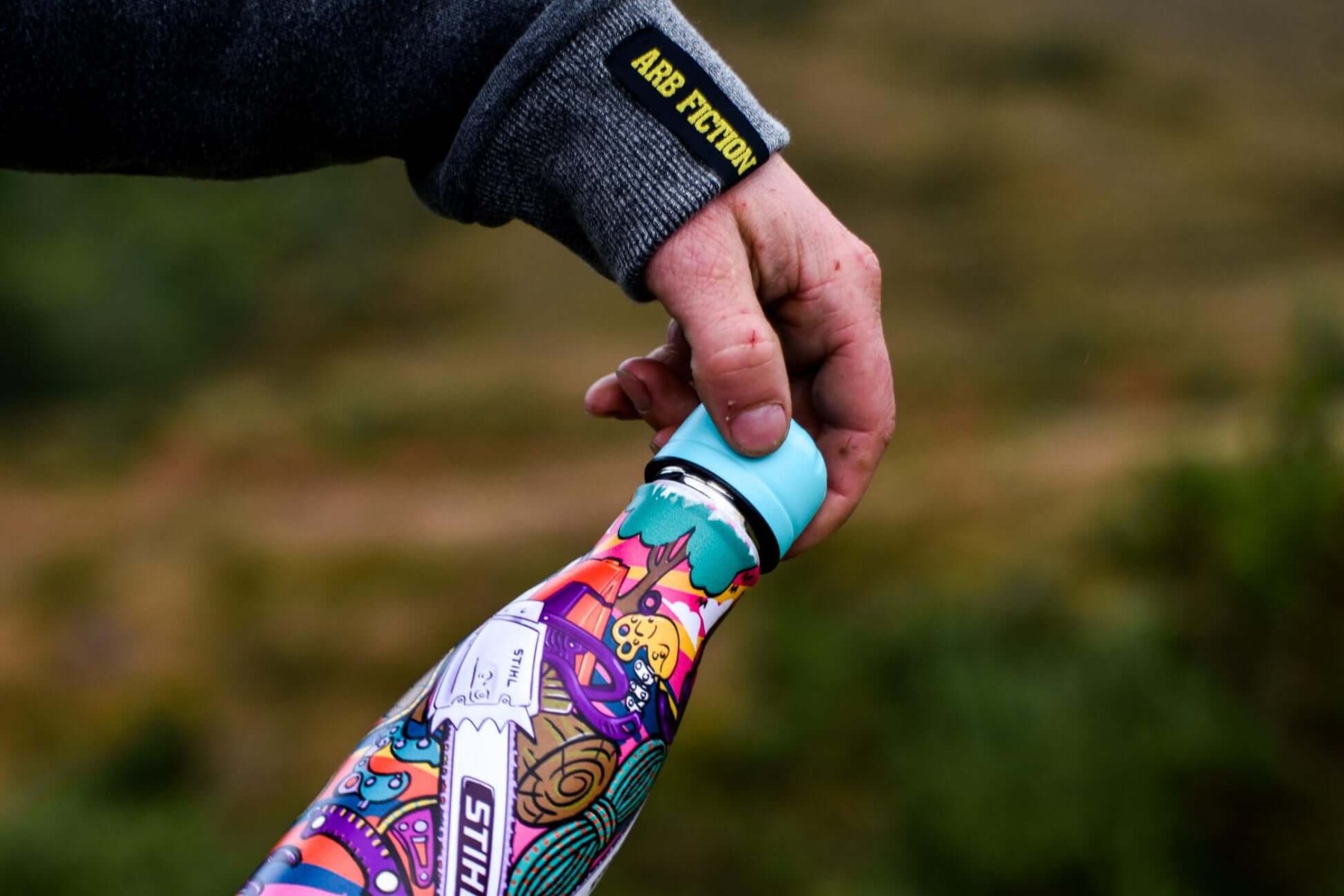Description
36 V, 4.0 Ah Lithium-Ion battery. The AK 20 powers tools within the STIHL AK System. With an energy capacity of 144 Wh, the battery has an integrated LED charge indicator, clearly displaying when the battery needs charging. Ideal for homeowners working in their garden, the AK 20 is versatile, long-lasting and durable, making it ideal for demanding gardening tasks.
AK System batteries feature an intelligent battery management system – this clever technology gives a constant level of power whether the battery is 100% charged or 1% charged. Compatible with the AL 101, AL 301 and AL 501 charger units.
The AK 20 will give you full power / reduced power when used with the following tools:
| Full power | ||||
|---|---|---|---|---|
| MSA 60 | HTA 50 | HLA 56 | FSA 60 | FSA 70 |
| BGA 50 | BGA 57 | SHA 56 | SEA 60 | RMA 235 |
| RMA 239 | RMA 243 | RMA 248 | RMA 443 | RLA 240 |
| Reduced power | ||
|---|---|---|
| MSA 70 | MSA 80 | REA 60 |
Specifications
| Engine/Battery Type | |
|---|---|
| Voltage |
| Weight |
|---|
STIHL
Reviews
STIHL Warranty
STIHL Battery Care Guide

Why you should not charge your lithium-ion battery before storing it
Today, battery technology uses lithium-ion as standard, and these cells experience negligible levels of self-discharge. To protect cells from over-discharge, a lithium-ion battery is usually built with separate integrated fuses that can automatically switch a highly discharged battery to a rest state, so they don’t need to be fully charged before storage. In fact, lithium-ion battery life is extended if it goes into storage partly charged – that said, it’s worth remembering that cells are negatively impacted in the event of storage with a very low level of charge or if the battery is fully charged. We recommend that you store a lithium-ion battery with two lit LEDs, indicating a charge of 40-60%, to minimise ageing and self-discharge.
Proper storage of tools with an integrated battery
A power tool with an integrated battery, such as the FSA 45 grass trimmer, needs to be treated differently from other cordless tools, as you cannot remove the battery for storage purposes. Battery storage preparation for these tools is simple:
- Switch off the power tool and pull out the activation key.
- Use a damp cloth to clean any dirt or soil off the power tool before it goes into storage.
- Keep the power tool in a dry, secure place.
Store the power tool at low, frost-free temperatures. Avoid storage in direct sunlight and damp conditions. Further information on the storage temperature for your power tool is available in the instruction manual. For safety, we recommend storing the activation key separately from the cordless power tool.
When is the best time to charge the integrated lithium-ion battery again?
If you are using your cordless power tool with an integrated battery after a lengthy storage period, charge it just before you use it. This safeguards the capacity and has a positive effect on the service life. The battery will only charge at temperatures above 5°C; the charger monitors the battery temperature and prevents charging if the temperature is too low or too high.
Keep your lithium-ion battery protected
- Remove the battery from your cordless power tool before storage. Check the charge level and make sure that 2 LEDs are lit on your battery. If required, use a damp cloth to clean dirt and soil off the battery.
- Store the battery in a dry place and out of direct sunlight, in a closed box, for example.
- Temperature requirements: it’s best to store batteries at a temperature between -10°C and 50°C – dry basements, garages, or a well-insulated shed, for example.
- Store your lithium-ion batteries in a secure place, and place them safely out of the reach of children.
- Store the charger separately from the battery, at a temperature between 5°C and 40°C.
- Further information on the storage temperature for your power tool is available in the instruction manual.
Is it dangerous to charge a battery for too long?
It’s normal for a battery to become hot when charging, and it is not a cause for concern. High-tech Li-ion batteries carry a very low fire risk, thanks partly to the integrated battery management system, which ensures that when a battery reaches its full charging capacity, the lithium-ion battery charging process is stopped and the current switched off. This prevents overcharging and the associated heat build-up.
Protect your battery against cold weather and frost
A Li-ion battery may also be damaged if temperatures are too low; whereas particles are accelerated when hot, in cold conditions, the process slows down dramatically, so a frozen battery may be impossible to charge. We recommend you do not store your battery and cordless power tool outdoors during the winter, and always ensurea moderate ambient temperature when charging or storing, in a basement or garage, for example.
Worth noting!
All STIHL batteries are supplied to dealers with a factory default charge level of 30%. Before first use, the battery should be charged to 80-100%.


